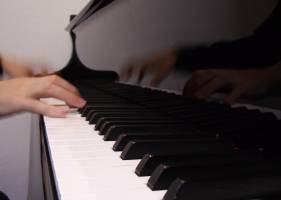
- “one of the most brilliant pianists of the contemporary repertoire” The Sunday Times
Repertoire
Mark Knoop performs a wide variety of music as a solo pianist, chamber musician and conductor. A selection of this repertoire is listed: choose a category above to browse, or search the database using the form below.
Phase Portraits
piano pieces 1973-2003
| Book 1: 1973-82 | 23´ | |
|---|---|---|
| 1 zero-knowledge protocols | for Julie Adam | 1973/2002 3.5´ |
| 2 helical | to Isobel Sears | 1975/1993 3.5´ |
| 3 small box of time | for Steven Niles | 1976/2002 2.5´ |
| 4 dancing qualia | for Malcolm Troup | 1978/2002 2.5´ |
| 5 tiento de medio registro alto | to Robert Schuck | 1978/2002 2´ |
| 6 tenebroso | for Peter Edwards | 1978/2002 2´ |
| 7 Pas Seul I: reading Takahashi | for Michael Finnissy | 1979/1993 3.5´ |
| 8 Pas Seul II: vectorial | for Rolf Hind | 1979/1993 3.5´ |
| 9 E-330 plays | 1982/2003 4.5´ | |
| Appendix to Book 1: | ||
| 10 Pas Seul III: rushes [piano duet] | for Michael Finnissy and Seema Quraishi |
1979/1996 7´ |
| Book 2: 1983-1992 | 17.5´ | |
| 11 into the wormworks | for Ian Pace | 1984/1995 6´ |
| 12 esperance | for Stephanie McCallum | 1986 3.5´ |
| 13 heretical bagatelles Books 1 & 2 | for Mark Knoop | 1992/2002 8´ |
| Appendix to Book 2: | ||
| 14 mem(e) [bassflute + piano] | to Richard Toop | 1994/2003 5.5´ |
| Book 3: 1993-2002 | 17´ | |
| 15 the heart’s algorithms | in memory of Gérard Grisey, and for Mark Knoop | 1993/1999/2002 15´ |
| 16 ik(s)lands fragment | for William Hughes | 1997/1998 2´ |
| Phase Portraits total time: | 75´ |
About the cycle
by Chris DenchAt first I started to write short piano works simply as experiments, attempts to find a personal voice through the medium of my own instrument. As time went on, though, I found that I was also producing larger pieces that were entirely effective as free-standing works, such as topologies (1979) and tilt (1985). This led me to the idea of assembling the shorter pieces into a set, both to underline certain resemblances and shared preoccupations, and to make them more attractive as recital items.
The result is an unusual phenomenon, a musical autobiography covering thirty years of continuous productivity. Another feature that all the pieces (except esperance) share is that they have two creative dates attached: a date of first writing, and a revision date, and most are separated by a fairly long gap. Thus the new versions manifest dual personalities, a collusion of my younger and older - English, then Australian - selves.
I have grouped the pieces into three Books, with the eight short pieces in Book 1 clearly falling into the try-out category, although a growing confidence and vision is evident even to me, their author. The shorter Book 2 contains longer works from my most experimental period, and the first and third required a considerable amount of revision; esperance, however, I have not touched, firstly because it was already published, and secondly because it seemed fine the way it was.
Shorter still, Book 3 is constituted of only two pieces, the heart’s algorithms, an enlarged transcription of my (withdrawn) 1993 harpsichord piece, le Passacaglie, itself drawing on works by Louis Couperin and Frescobaldi, and the ik(s)lands fragment, a brief revisiting of the material of my large vocal/ensemble piece, ik(s)land[s]. I would not have considered including the heart’s algorithms in the Phase Portraits set on account of its size, were it not for its inseparability from the ik(s)lands fragment; taken together the pieces clearly proclaimed themselves as a continuation - and almost certainly a conclusion - of the set.
Inevitably there were offcuts, works that did not quite fit into the main thrust of the Phase Portraits. Only two have been admitted: Pas Seul III: rushes, and mem(e). Of these, the first was a solo piano work, completing the Pas Seul set, but, in truth, the only pianist willing or able to attempt performance of the original version of rushes was Michael Finnissy (with whom I struck a bargain to swap titles - I got his rushes, he got my fin’ amor). When revising it for the Phase Portraits, I realised that diluting the texture to make it an approachable solo was to castrate the music, and I recast it as a piano duet - although even now it is tricky to perform on a single instrument. Consequently, two pianos, four hands, is permissible.
Mem(e), for bass flute and piano, was initially intended as a companion piece to my flute/bass clarinet/piano trio ‘atsiluth/shîn, but the latter turned out to not to require a satellite. As mem(e) fits very comfortably into both the musical evolution and chronology of the set, I decided to include it, rather as Ives includes a flute in the Concord Sonata.